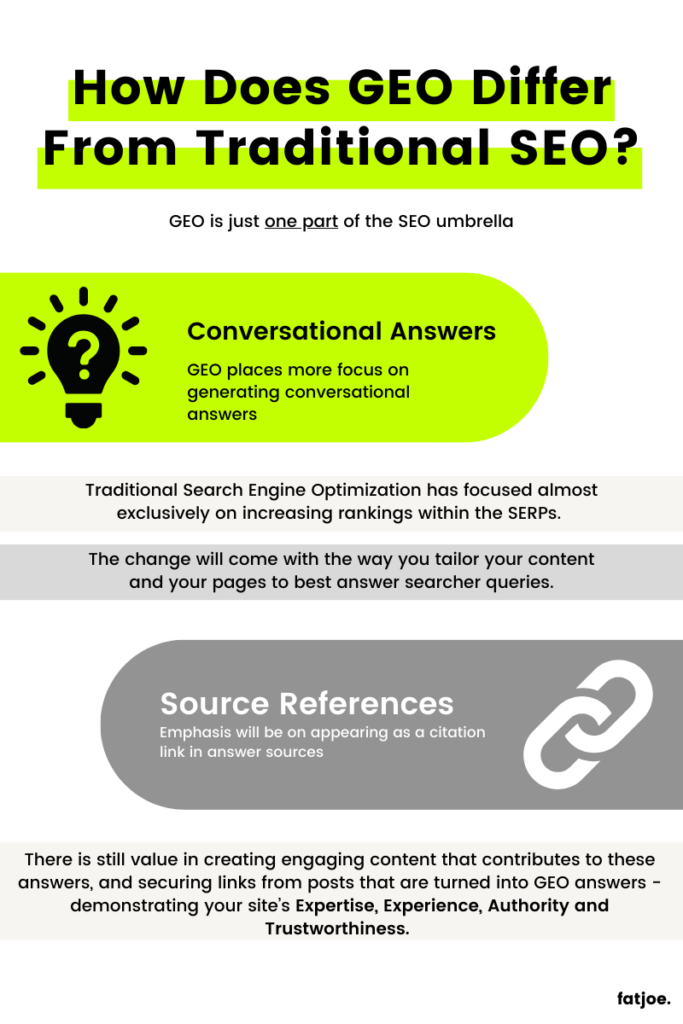
It’s no secret that SEO is being fundamentally challenged by AI.
ChatGPT now has built-in search, Google serves AIOs everywhere, and that’s just scratching the surface of the impact of AI.
But users are still searching – it’s just changes to how they’re searching.
With changes to search come changes to search engine optimization.
Some are asking if SEO needs to change and even if it can survive at all.
Let’s discuss:
Voice search and voice assistants offered a new way to search. Those engaging with voice assistants tended to ask specific, answer-driven queries. Rather than researching topics themselves, they asked directly for a singular answer.
A typical search engine query might be “bookshops near me” while a voice search would have more direct intent, such as “what time is fatjoe books open until?” The typical search engine query would include the opening times as part of the overall info delivered, but with reduced results, the user has to directly ask the question to ensure they get the most useful answer.
These searches are conversational, mirroring the fundamental change in search behavior that we’re now seeing via AI chat like ChatGPT, Perplexity, and more.
Generative Engine Optimization (GEO) is the practice of optimizing your content and website to be featured in conversational AI responses from chatbots like ChatGPT, and also to be included in SERP features like AIOs (AI overviews) in Google.
AI chatbots are attempting to aggregate search results into their own unique answers to searchers’ queries, bypassing the possibility of even displaying webpages in the results, let alone driving clicks for those pages.
GEO takes traditional Answer Engine Optimization a step further by considering the way AI models aggregate and synthesize information. While AEO was primarily about providing a direct answer, GEO requires you to think about context, nuance, and the conversational tone that AI systems favor.
The rise of these technologies means that content must be accurate and structured in a way that fits the AI’s narrative/conversational style*—making it more “readable” for both bots and end users.*
